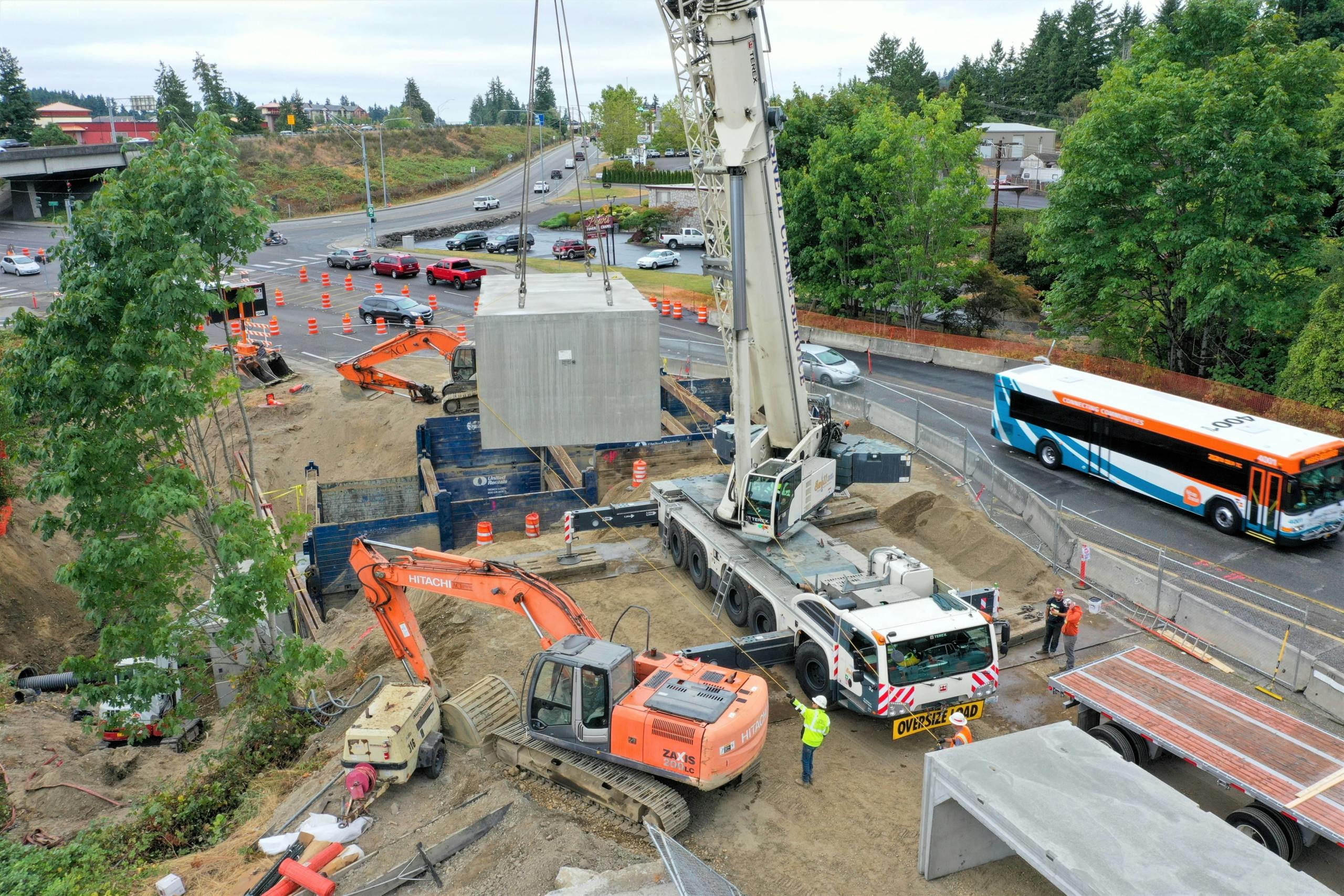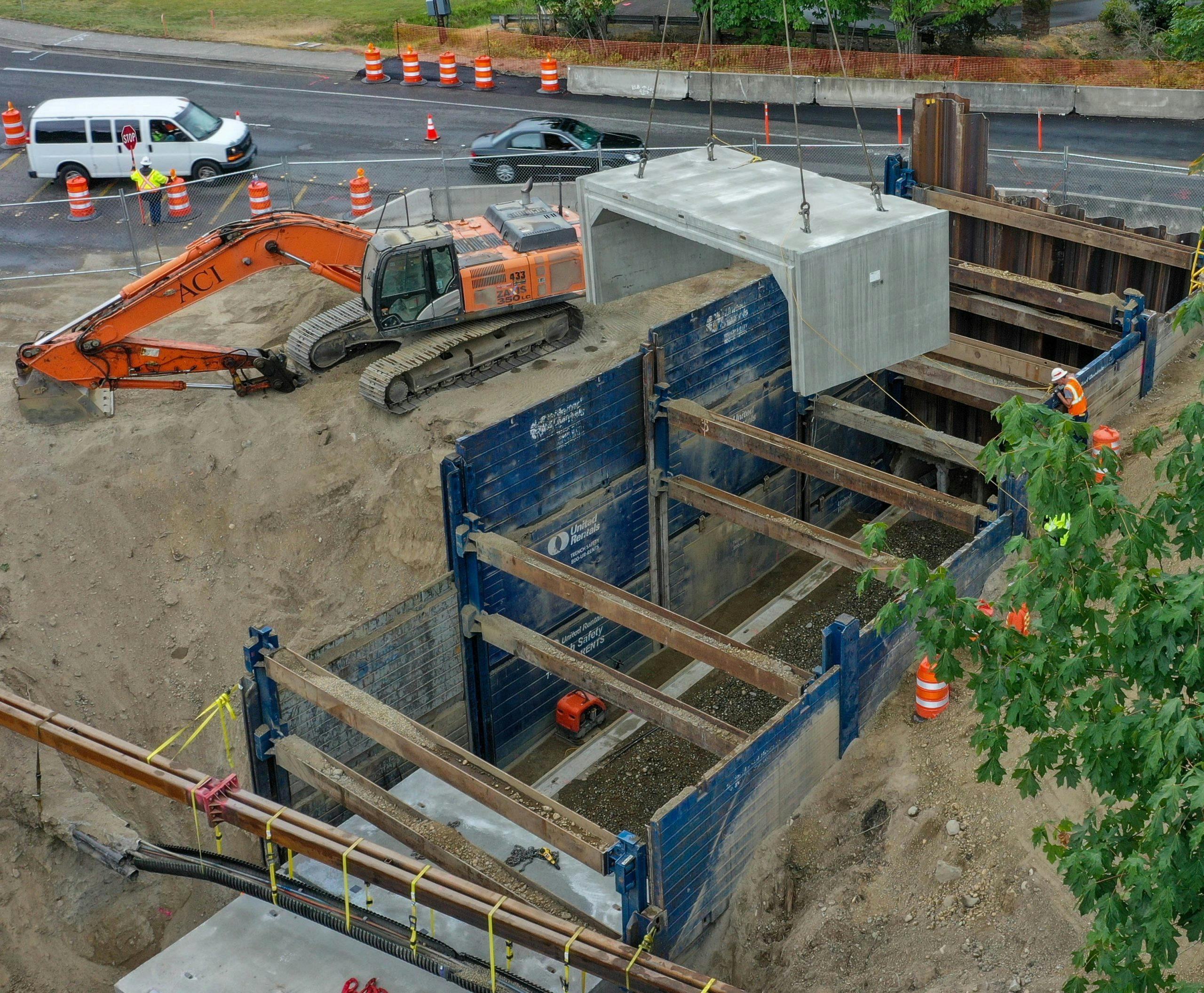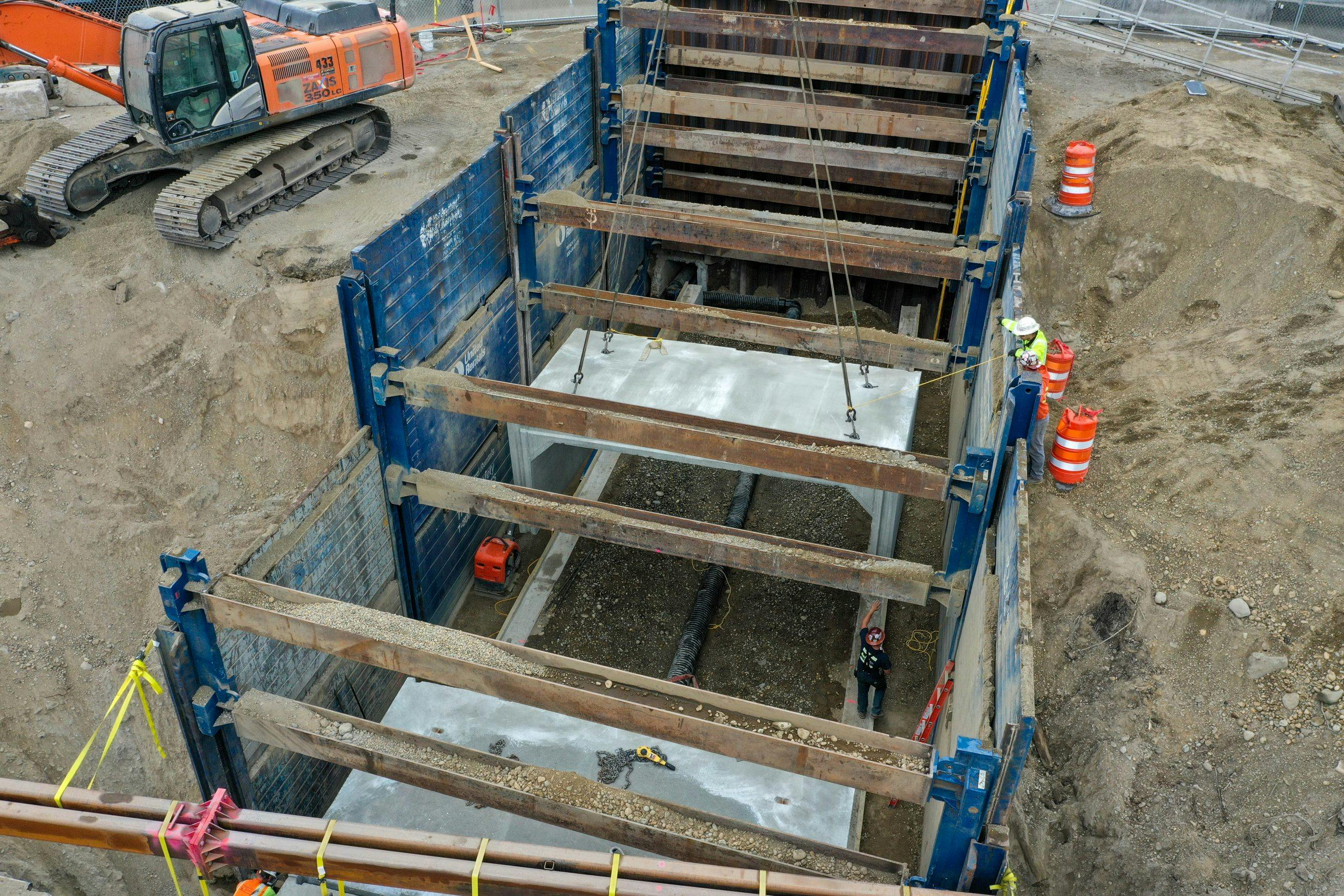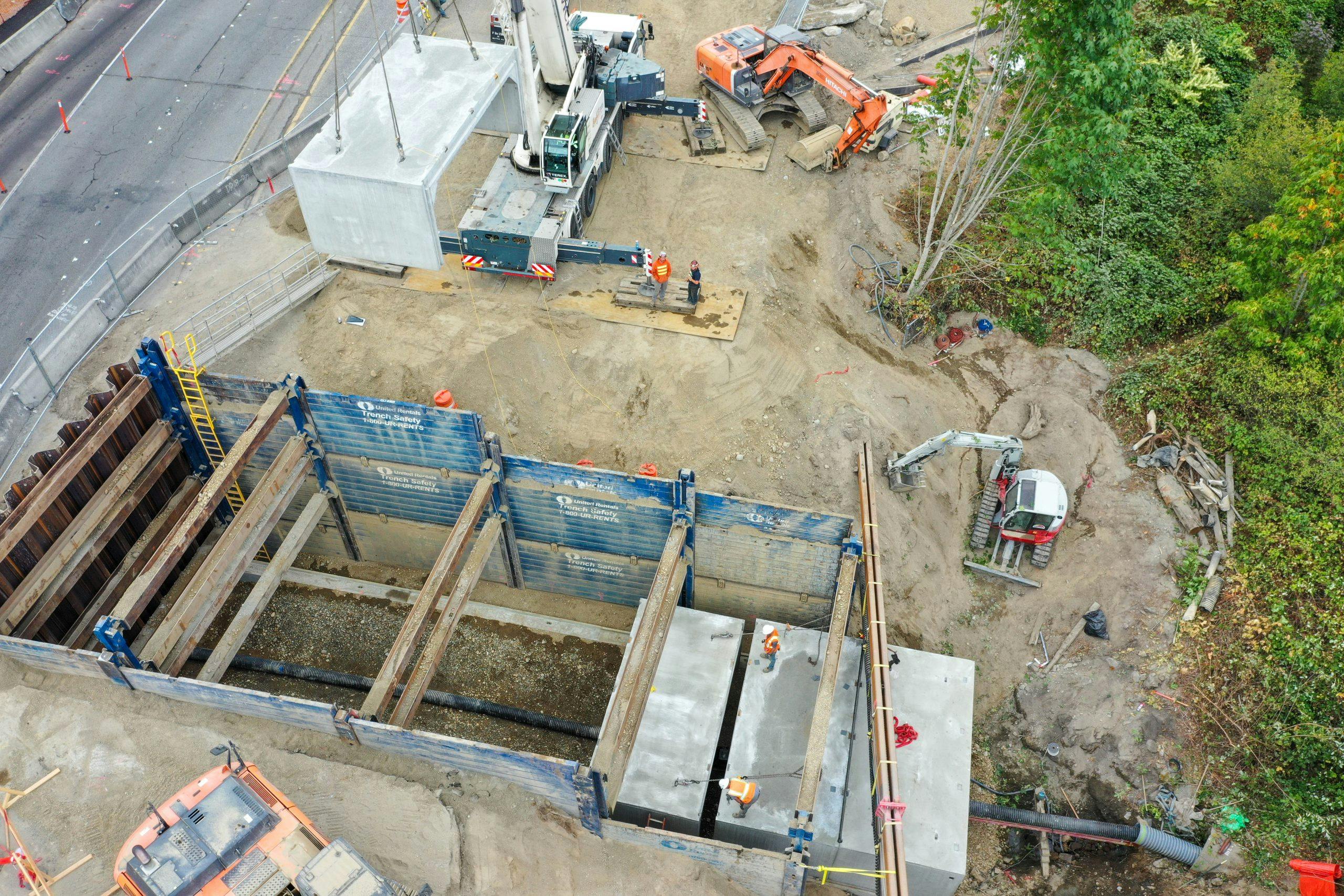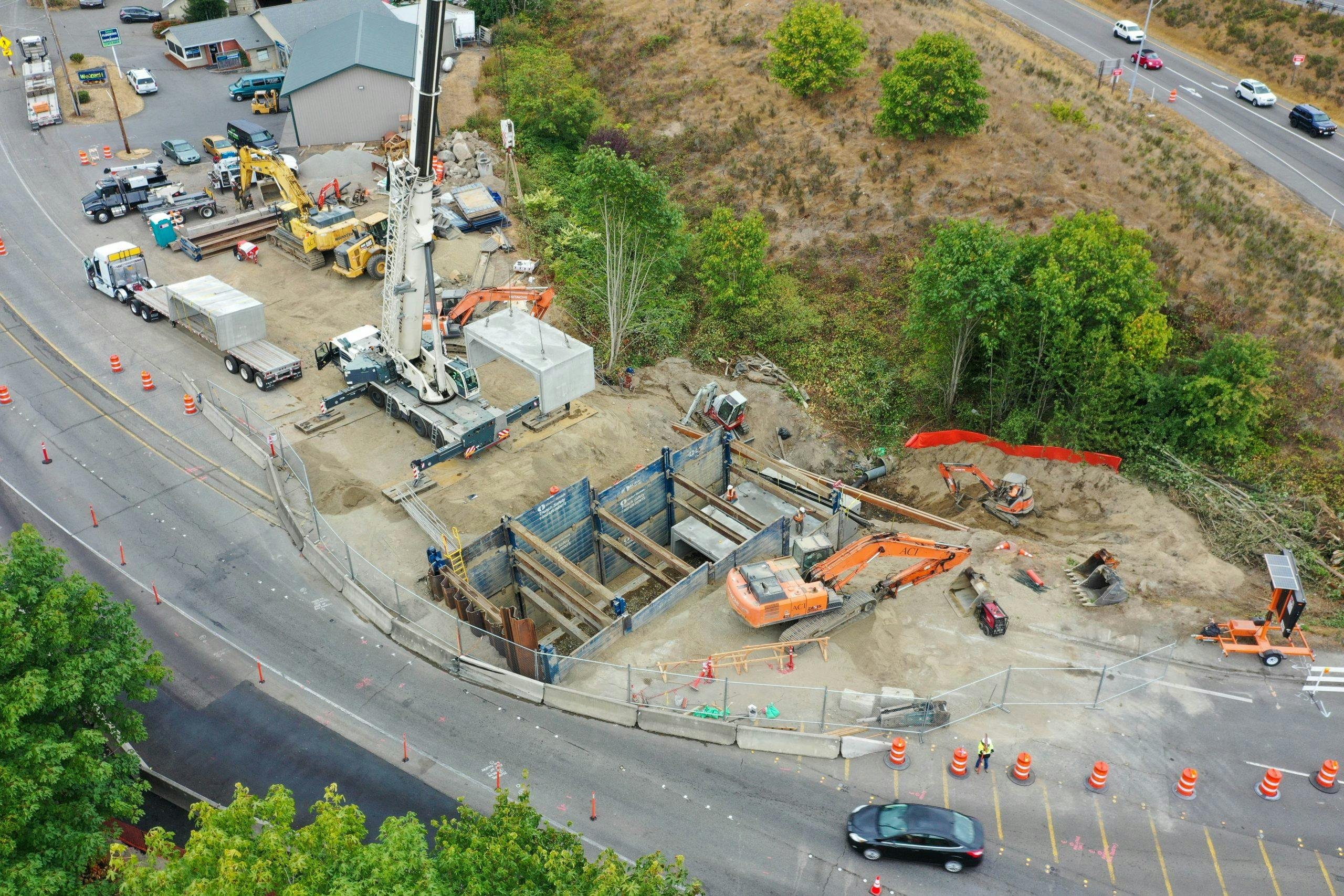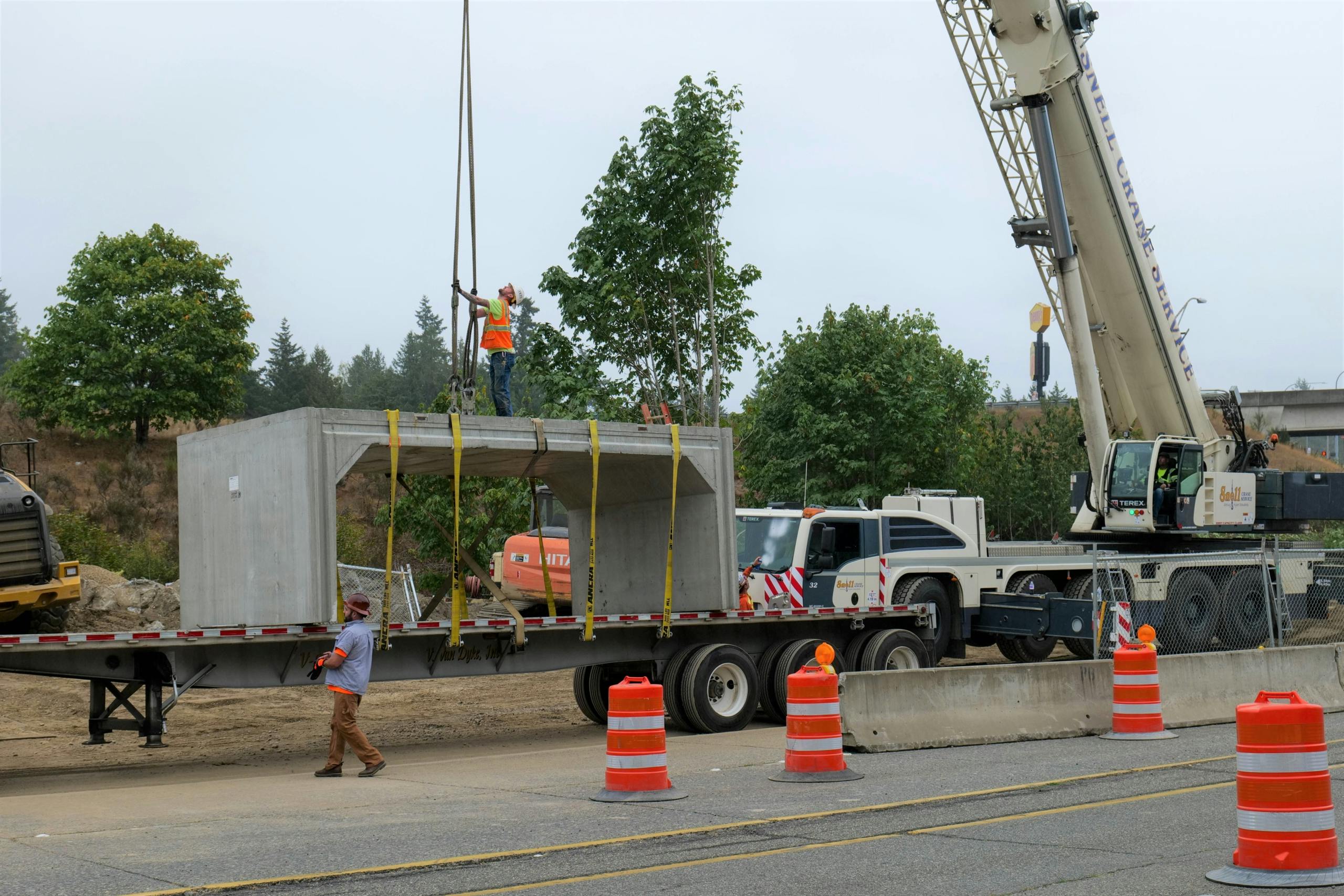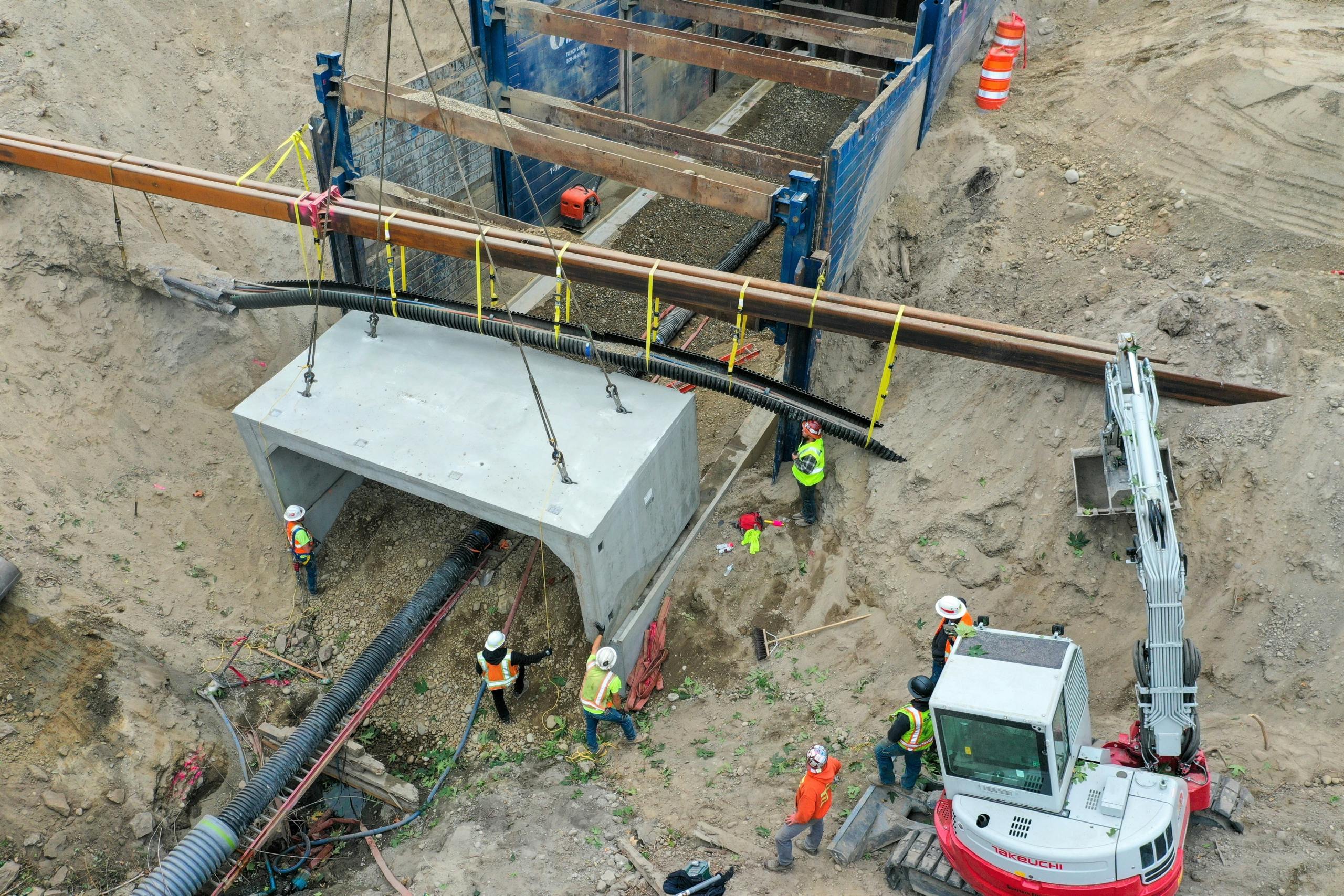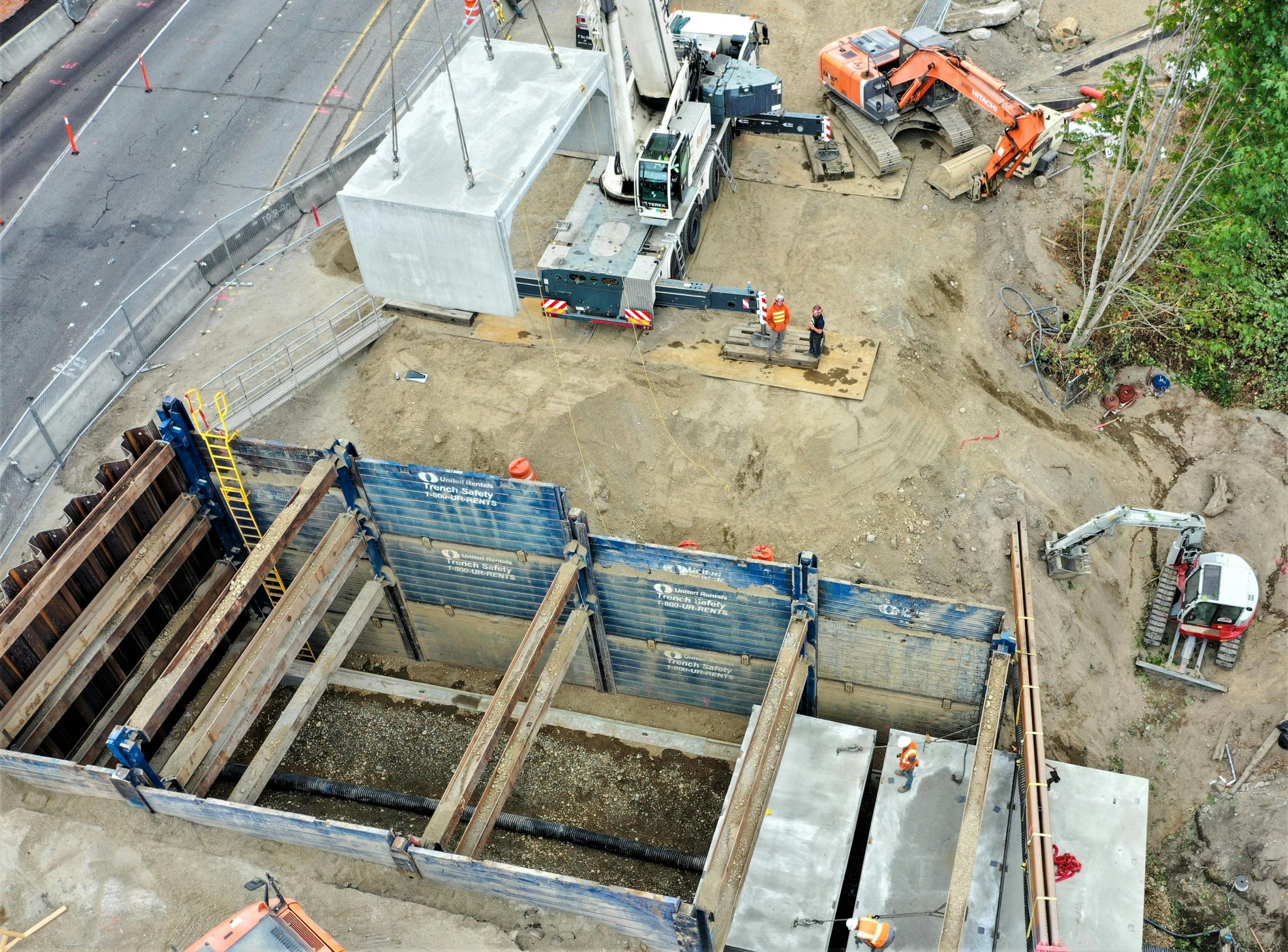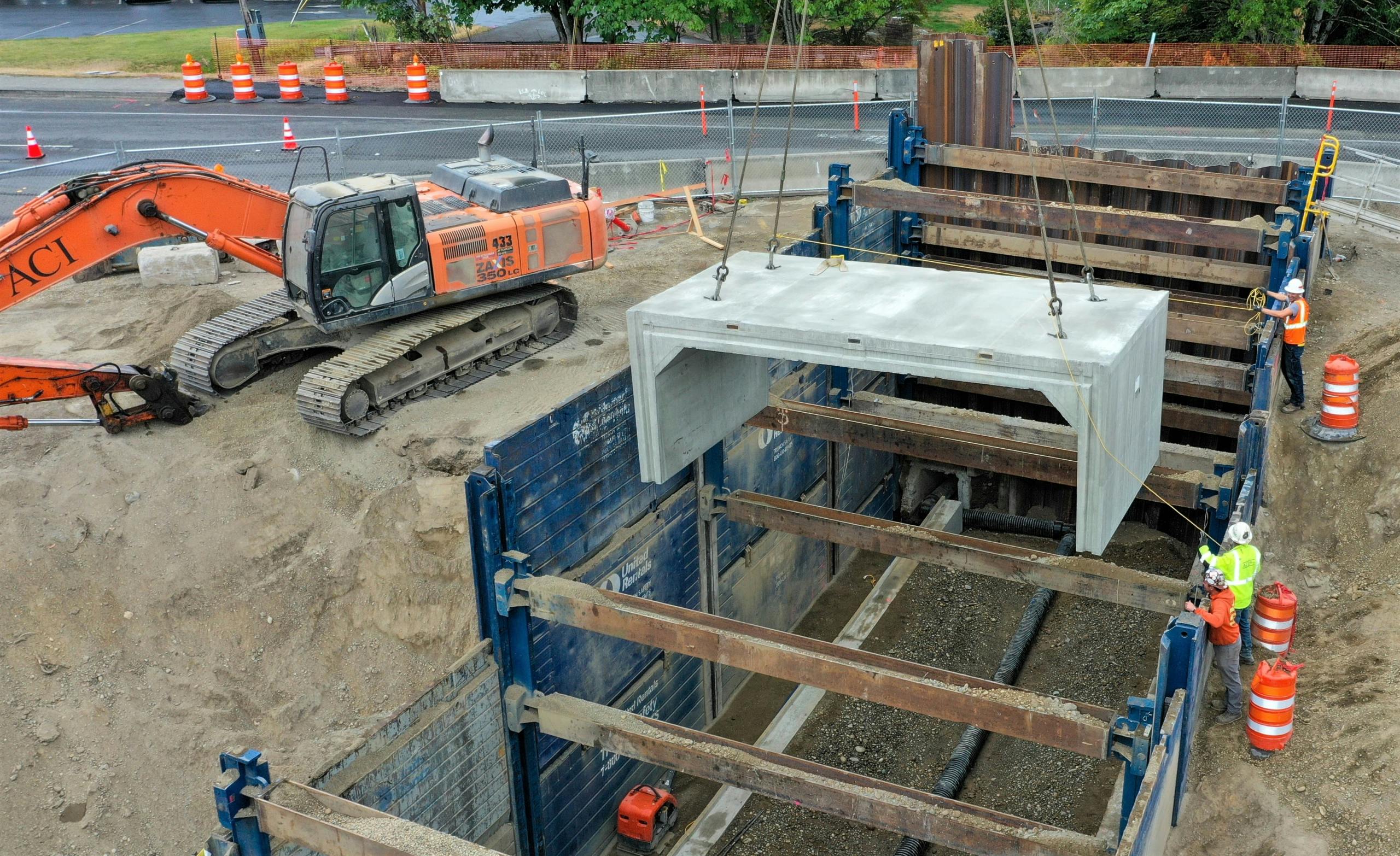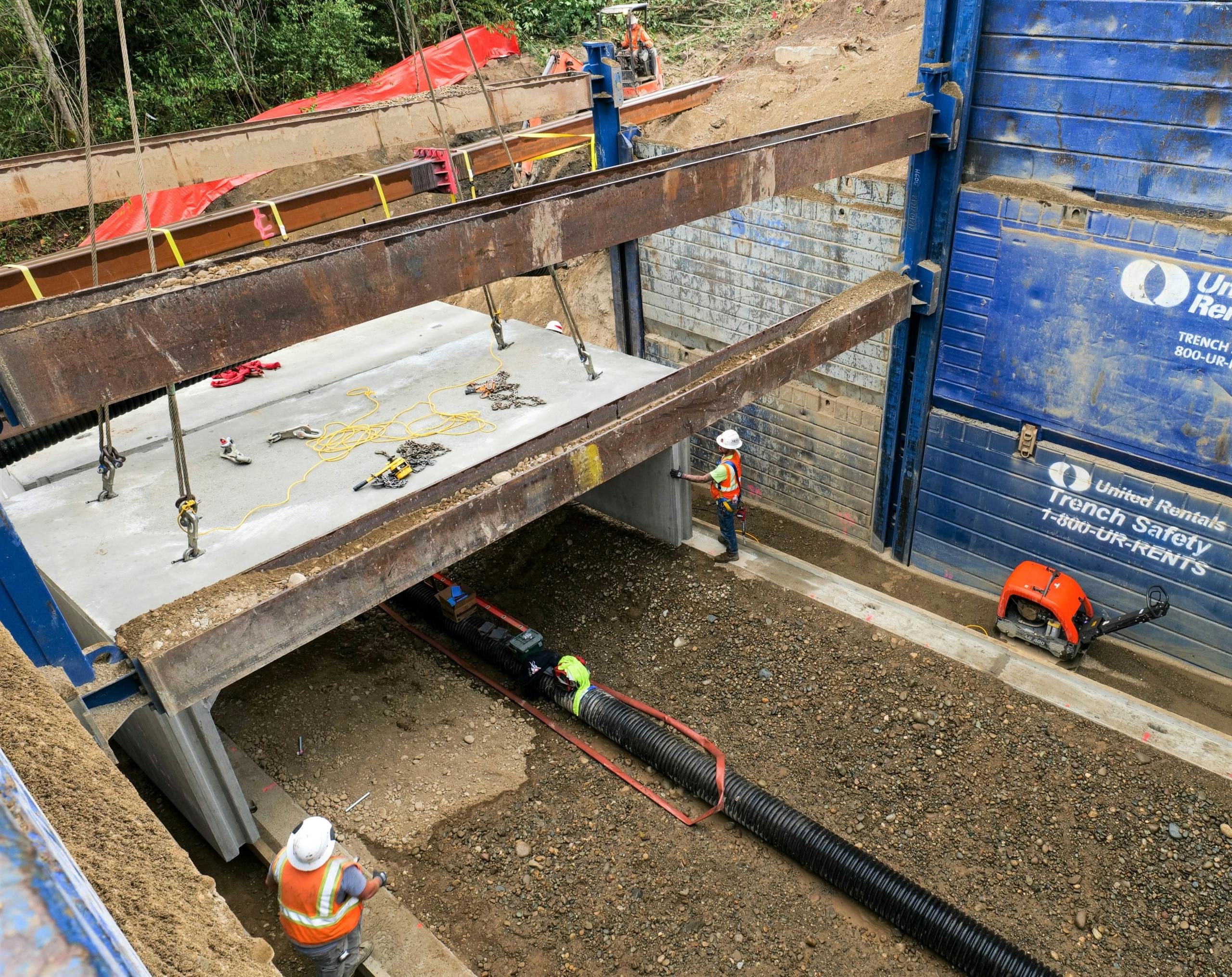Streambed Culvert Restores Fish Migration
Bremerton, Washington
Like many of the culvert conduits installed in the Pacific Northwest eons ago, the deteriorating tunnel in the stream under Kitsap Way in Bremerton, Washington, posed two big problems: the small culvert promoted flooding in heavy downpours, and it inhibited salmon and other fish from swimming upstream to spawn.
There was a time when building roads took precedence over everything else in this area, with less thought about the impact on the migrating fish population. Now the Washington Department of Transportation (WSDOT) and municipalities across the state are addressing those problems by replacing dark and declining culvert with wide open precast concrete spans that include natural streambeds to help restore the threatened fish population and decrease the chances of flooding.
Located a short ferry ride west of the Seattle metropolitan area, Bremerton is one of the Washington cities committed to upgrading its aging culvert structures. Jensen culvert products are playing a significant role in this environmental restoration effort.
Gary Venn, Jensen Pacific Northwest General Manager, says the new 146’ culvert structure his team engineered under Kitsap Way transforms the waterway from a murky tunnel to a more natural fish friendly stream.
“Fish do not like to go into the dark areas of the existing culvert,” Venn explains. “They have issues going through small culvert. The water flows are high, so they have issues swimming. There is no stream restoration, so they’re swimming through a culvert with no places to hide – no rocks, no trees, no stumps, or anything like that.
“Now with these culvert restoration projects we’re working on with area contractors, there is a very rigorous requirement to recreate the streambed. The specifications require construction of a streambed close to the natural environment as possible.”



Precast Replaces Cast In Place
Originally specified as an 11’H x 17’W span to replace a 4’ square cast-in-place culvert, Jensen proposed a 5’ stem wall on footings that support the three sided culvert pieces forming the bridge under Kitsap Way. The project includes 16 stem wall bases, 15 box culvert pieces, five wingwall sections, and a headwall to retain the soil cover, which ranges from 6’ to 14’ high.
In addition to providing a natural passage for salmon to swim to their spawning grounds, the size of the replacement culvert should relieve flooding pressure from the 100 year rains that are becoming more frequent. The wide expanse also reduces flows to a more natural level.
Statewide there are nearly 4,000 highway crossings on fish bearing waters, according to the 2021 WSDOT Fish Passage Performance Report. Of those, 2,073 are documented fish passage barriers, including 2,040 culvert structures. There are many additional culvert structures under city and county jurisdiction. As of June 2021, WSDOT had corrected 365 fish passage barriers, according to the report.
Momentum is building and will increase if Congress passes the Infrastructure Investment and Jobs Act in its present form. The IIJA includes $2.85 billion for salmon recovery and ecosystem restoration.
“There’s a big push to get this problem fixed,” says Patrick Sibborn, Lead Estimator at the Jensen facility in Puyallup, Washington. “Besides the small culvert, a lot of the existing structures are pipes under roads that do not allow fish to go any further because there’s a waterfall at the end of the pipe or the pipe itself just doesn’t lend itself to fish being able to swim upstream. It’s just a flow of water with no pools for resting or the fish are fighting a current they can’t beat.”
Each rehab project brings its own unique challenges, depending on the terrain and the infrastructure around the culvert. Active Construction Inc. (ACI) planned the Kitsap Way installation in two phases so it could close half of the roadway, install half of the culvert, pave, reopen the road, then close the second half and repeat the process.
“The contractor had a difficult installation on the first half,” Sibborn says. “There were utilities crossing the hole where they were installing the culvert – cable, fiber optic, phone, and water main lines.”
Frank Detray, ACI Superintendent, says that was just for starters. “We had a primary fiber duct on the north side that goes to the naval base near here,” he says. “They weren’t able to relocate it, so we had to work over it, under it, and around it. The south side had two water mains that we were able to remove and will put back at a later date.”
Eliminate the Barriers
The precast concrete components provided by Jensen were the least of his worries, Detray says. “The culvert sections are going together great. It’s been very smooth, very professional.” Once his crew completed the workarounds for utilities and fiber, the rest of the project was straightforward, with final culverts set October 8.
While it’s not so straightforward for the immediate outcome of the fish population, help is on the way. In the planning to remove old culvert pieces, work typically starts near a larger body of water, such as Washington’s Puget Sound, and then advances upstream.
“They eliminate the barriers as they go,” Sibborn says.
In this case, Bremerton needed to fix the flooding problem first. The old box culvert downstream still deters fish from traveling upward to the new Kitsap Way culvert. But not for long. They will soon be replaced as part of the city’s five year plan, eventually making it smoother sailing for the salmon.
Does your project call for design expertise with environmental issues? Give us your details now and we’ll have one of our engineers contact you.
